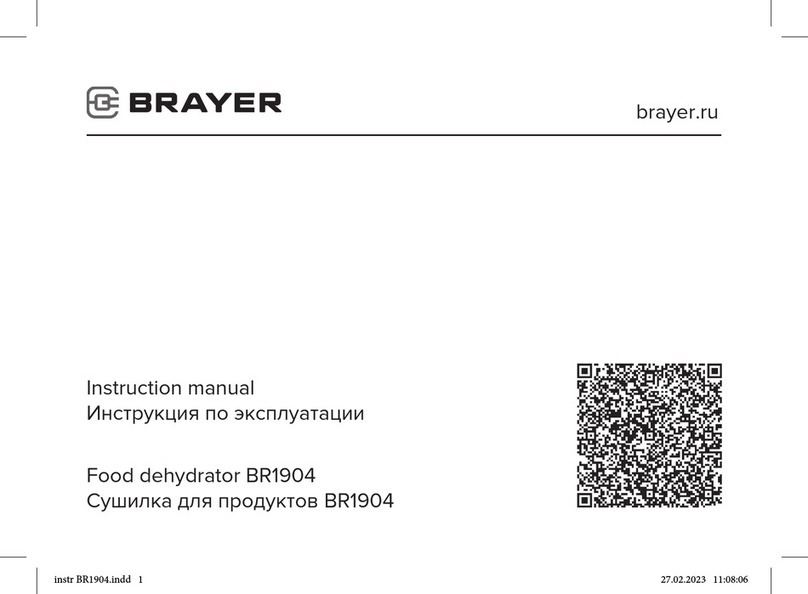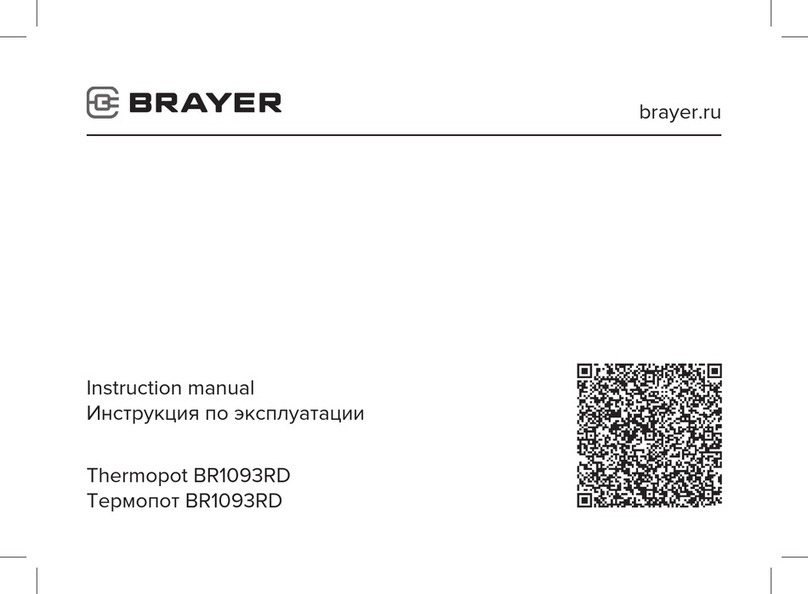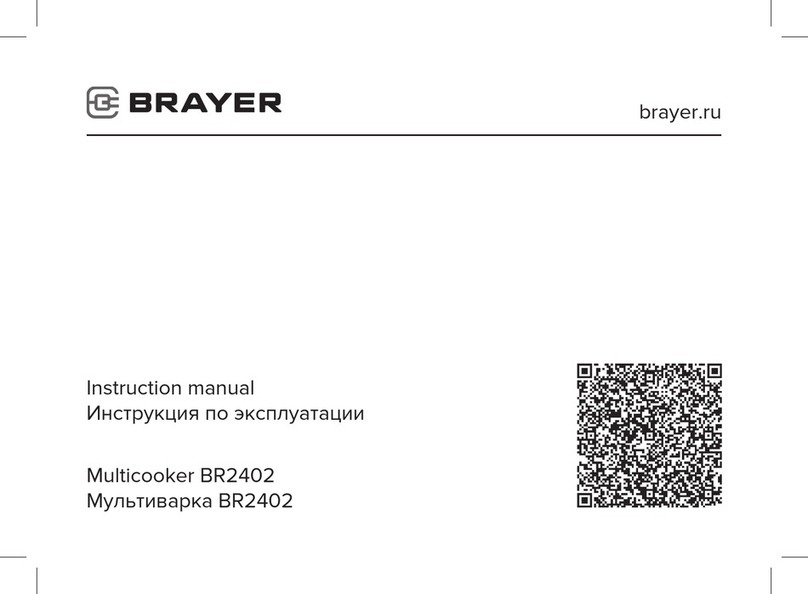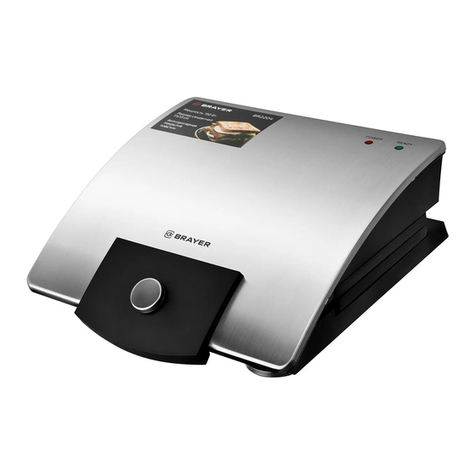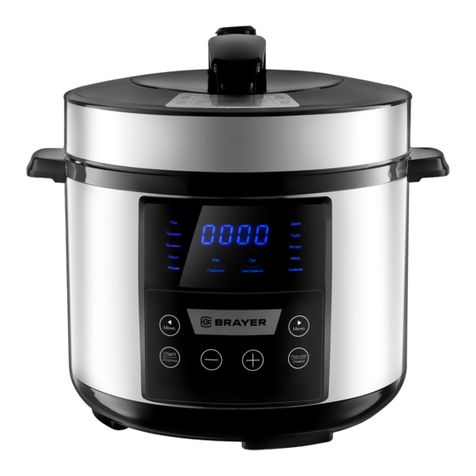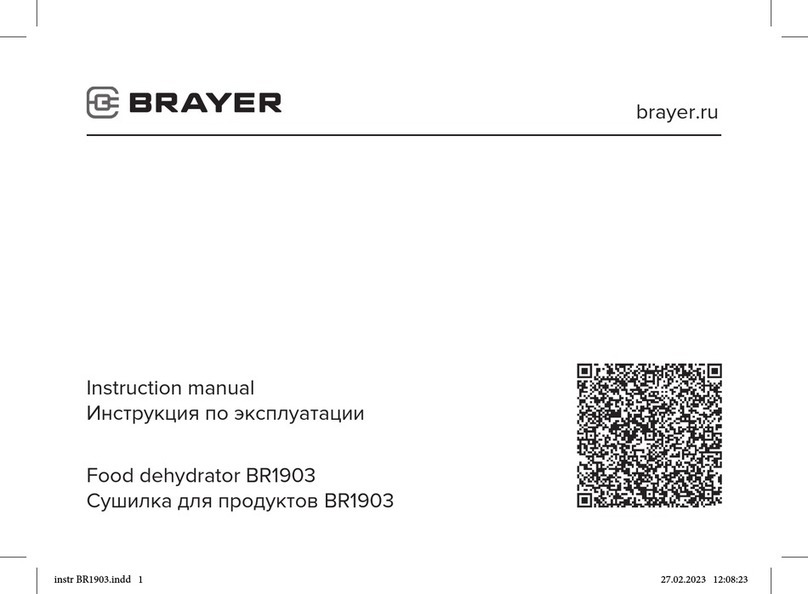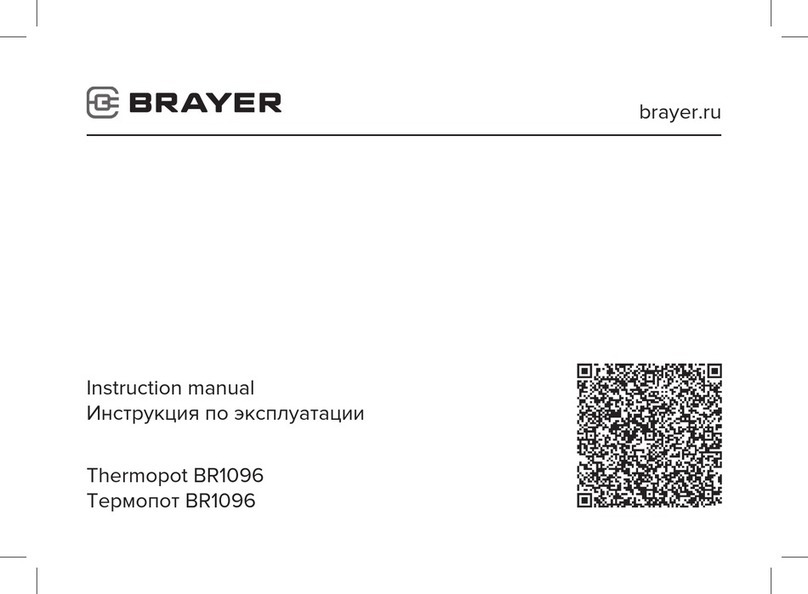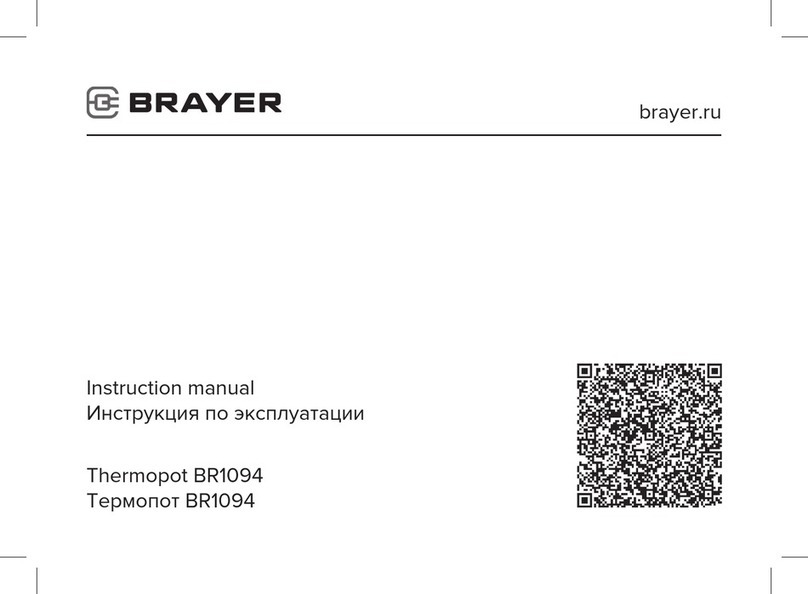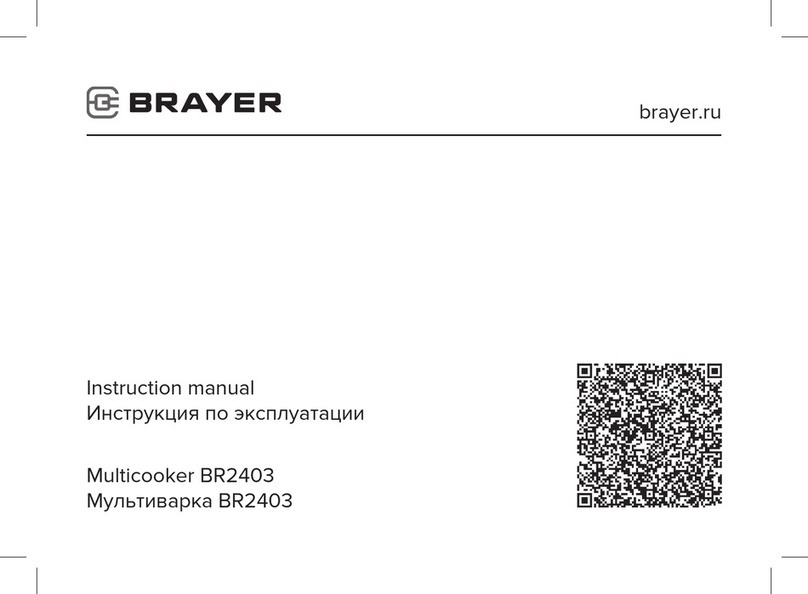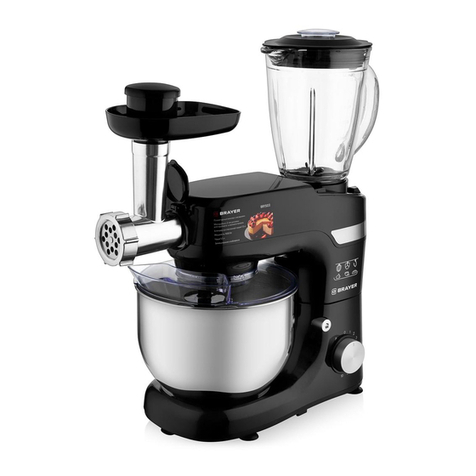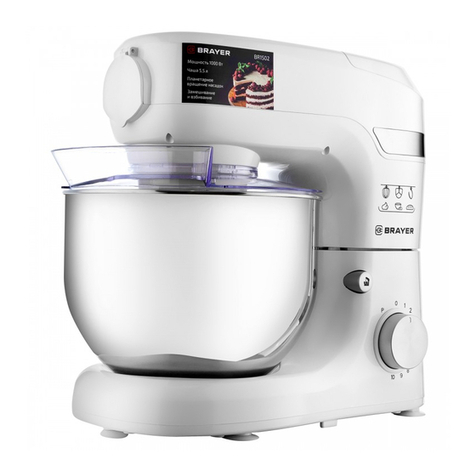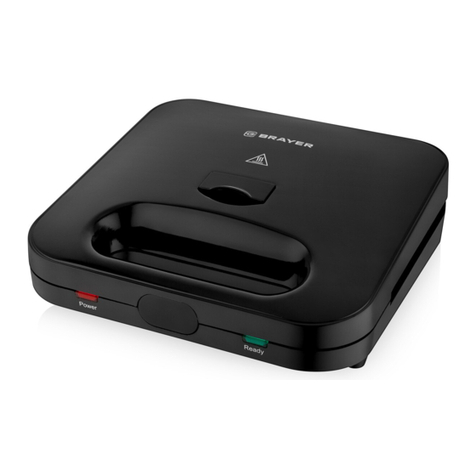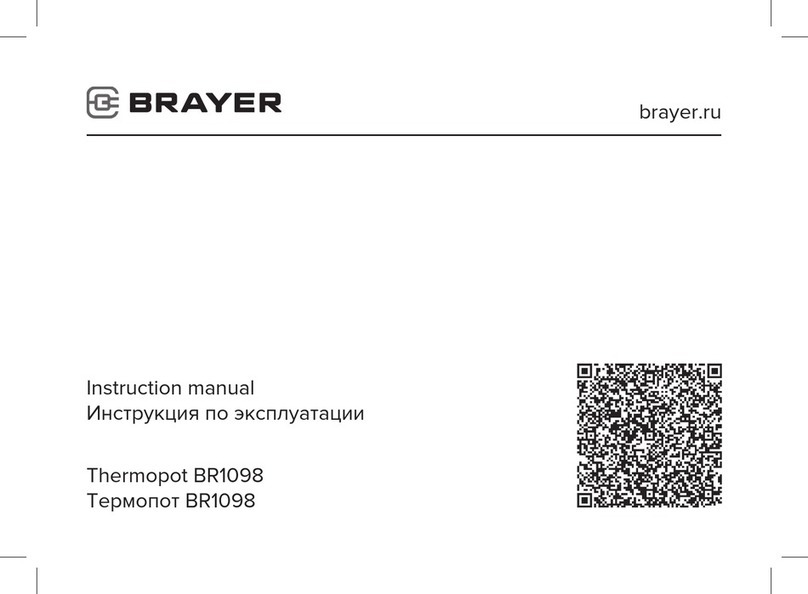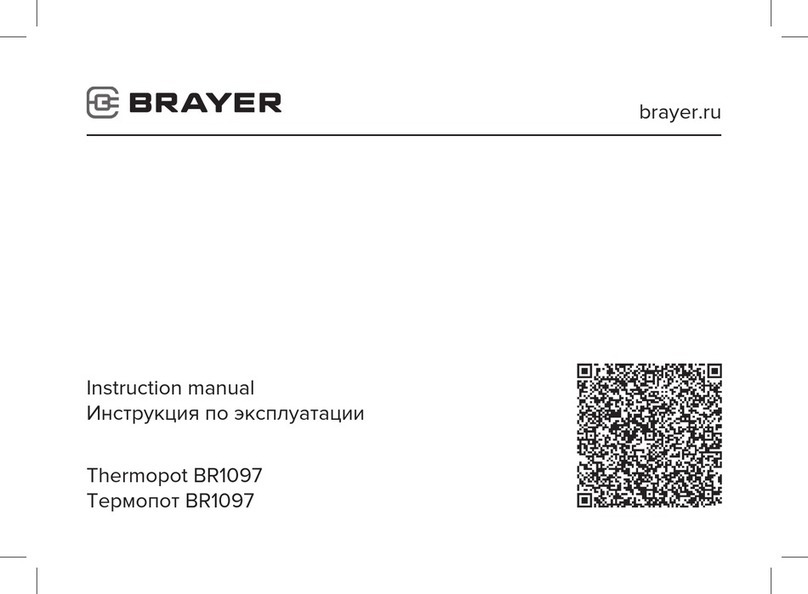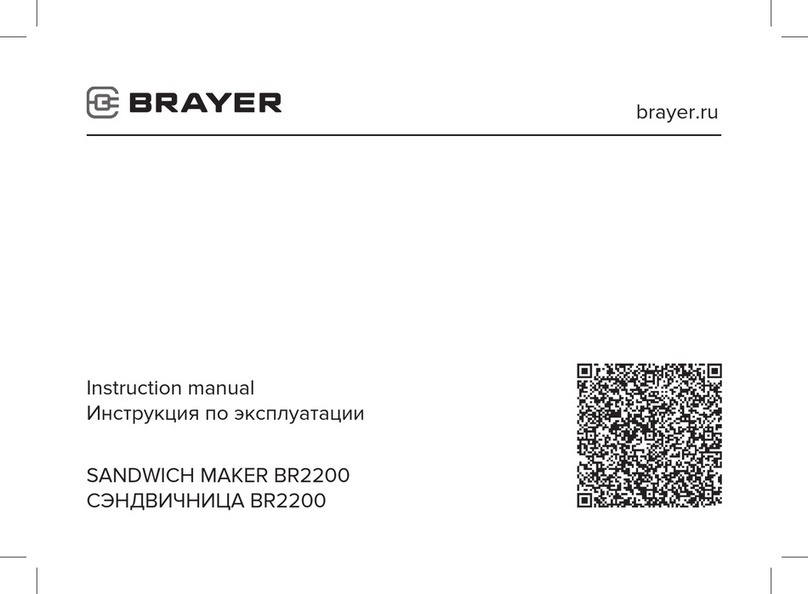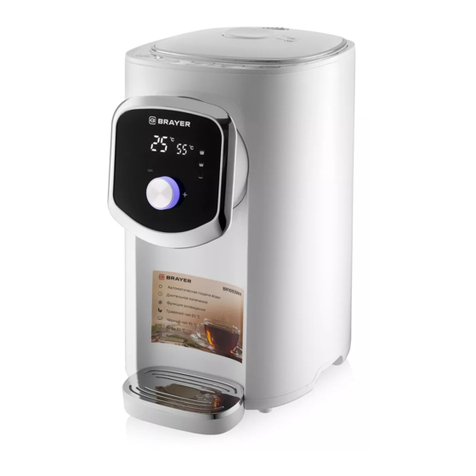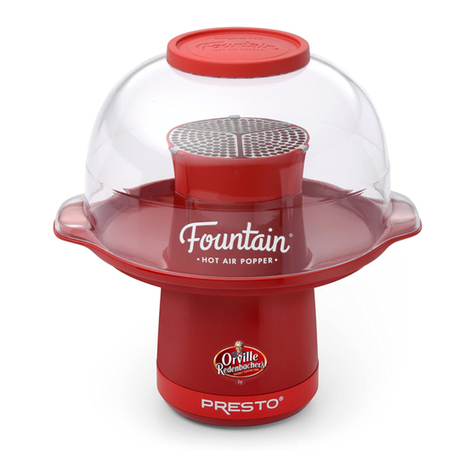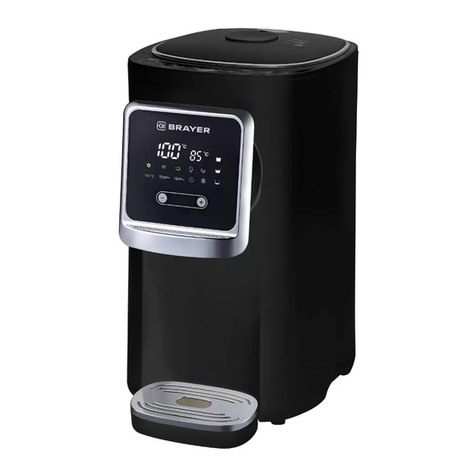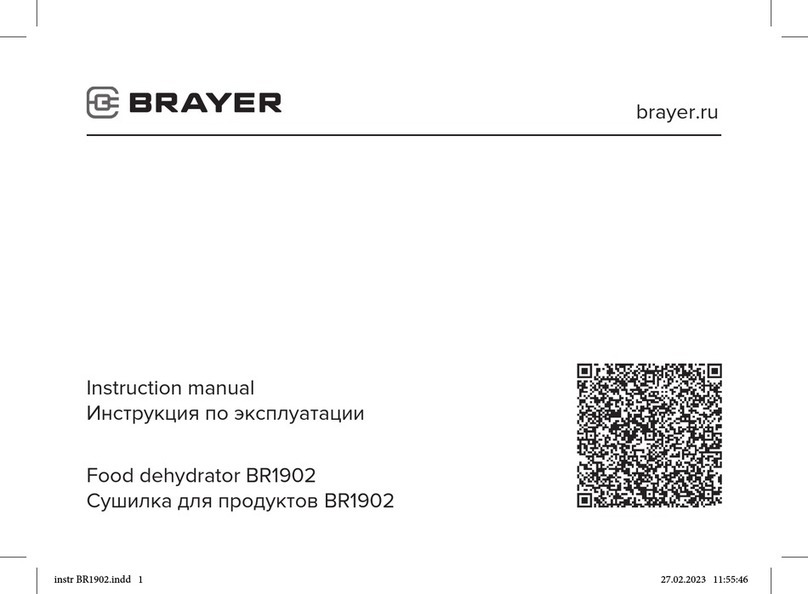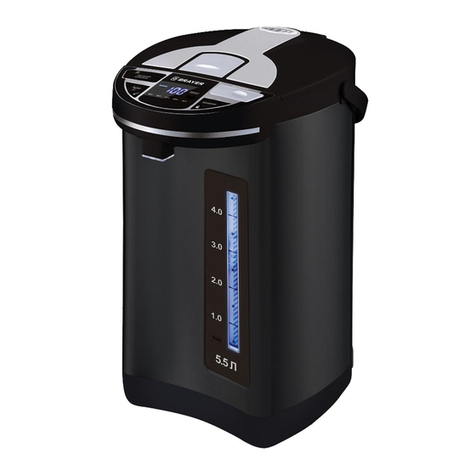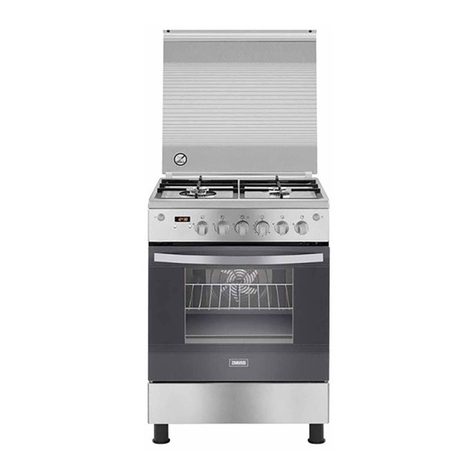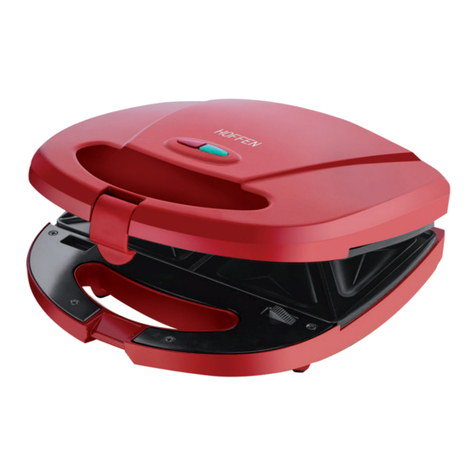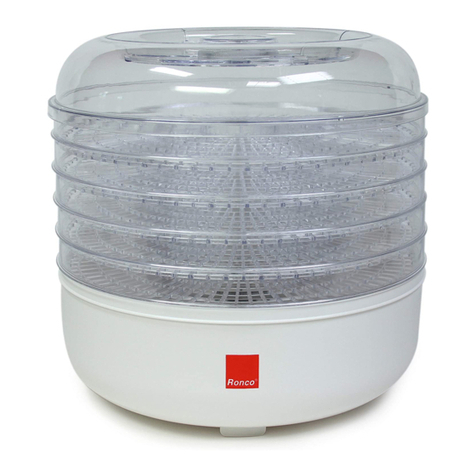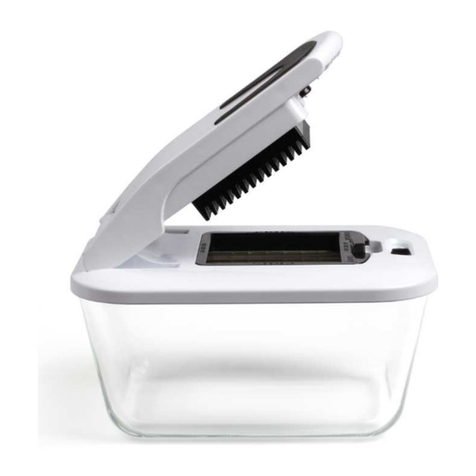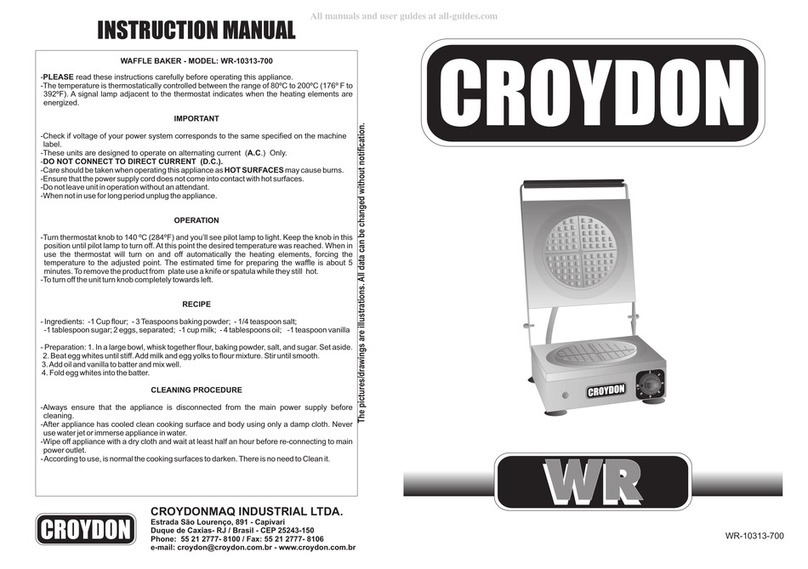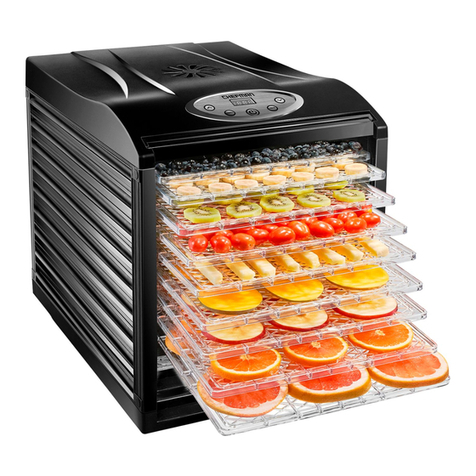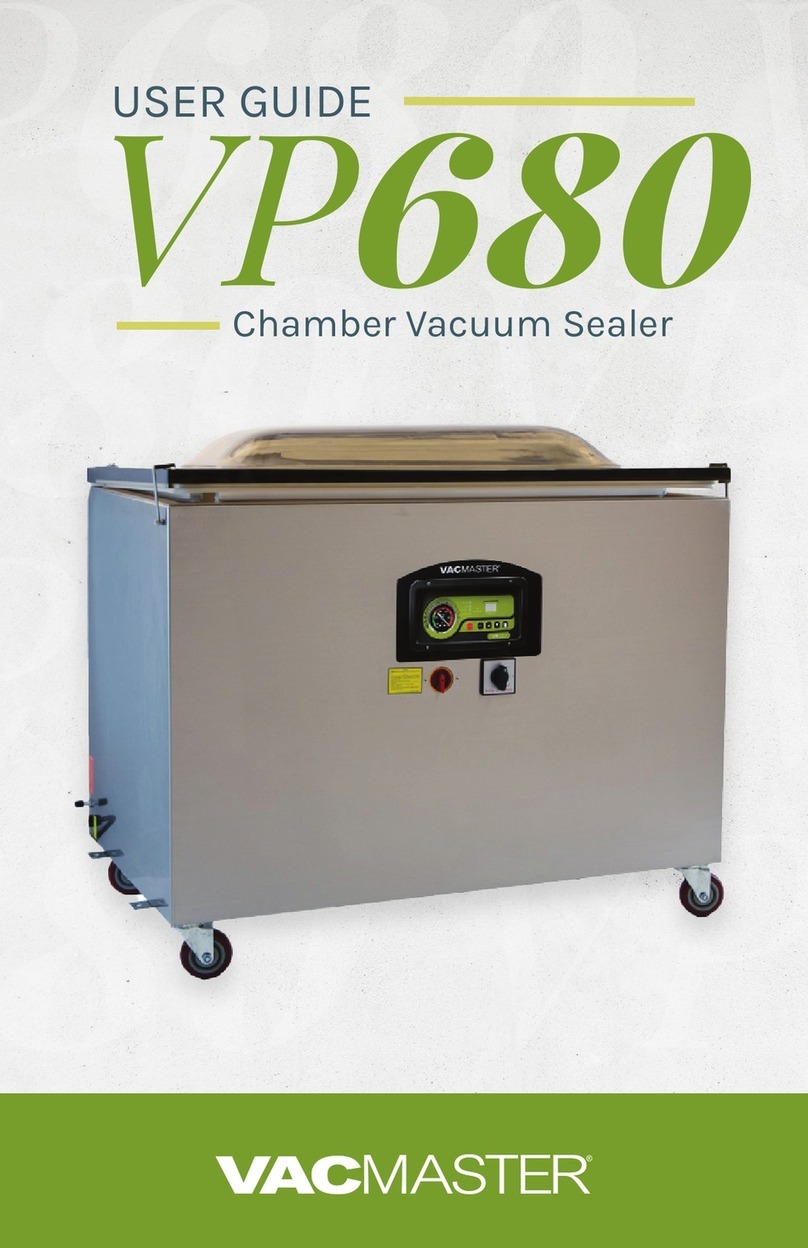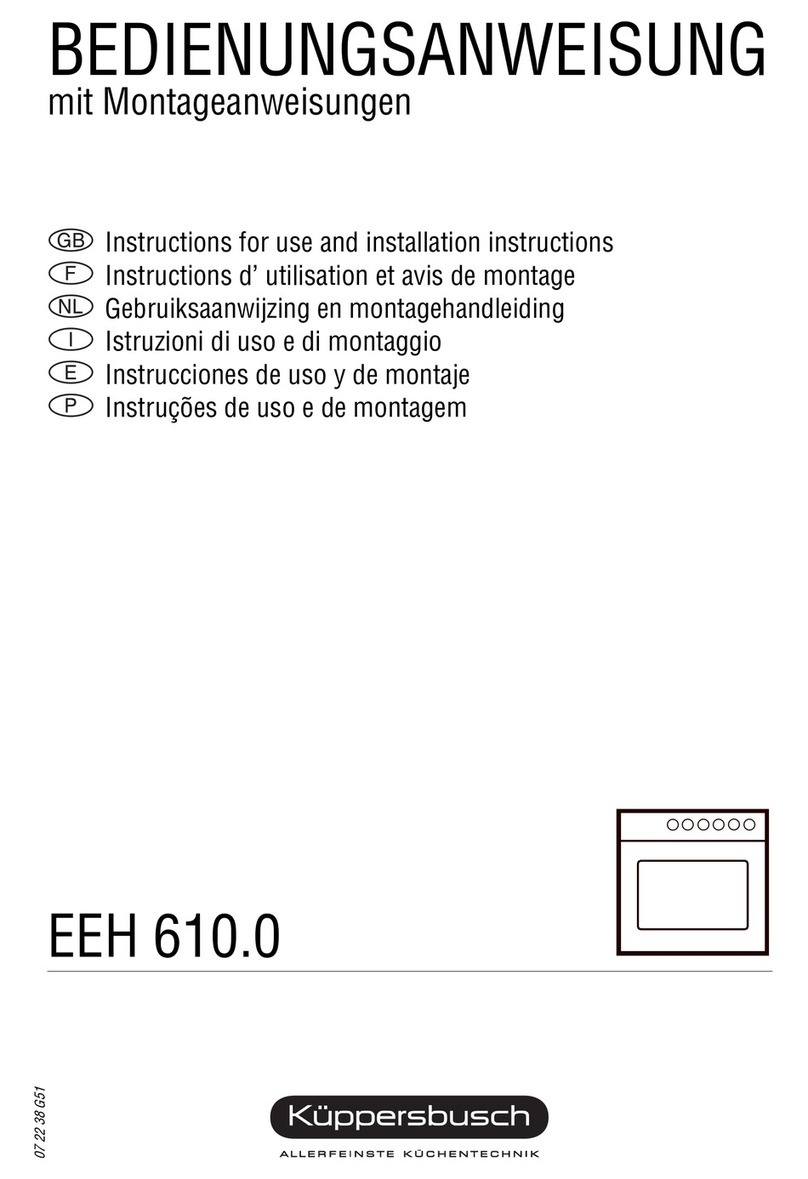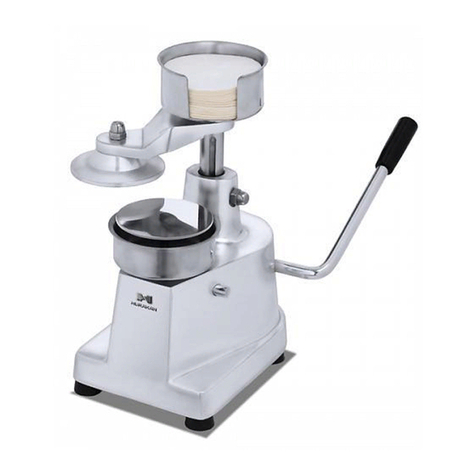
9
refrigerator for 30 minutes, remove the pieces of sh,
let them dry, and lay them out onto the mesh trays (3).
• Dry the sh until it stops secreting moisture.
• Keep the dried sh in an airtight container inside a
refrigerator. Do not store it for longer than 3 months.
Drying pre-cooked sh and meat
• Boil sh or meat.
• Remove the bones from the sh, cut the excess fat o
the meat, cut the foods into pieces, and lay them out
onto the grids (3).
• Dry the foods until ready.
• Keep sh and meat in an airtight container. Do not store
it for longer than 2 weeks under room temperature, or
longer than 3 months in a refrigerator.
Drying greens, avoring herbs, or owers
• Fresh greens, any avoring herbs, or owers are
suitable for drying.
• Dry the greens and avoring herbs together with their
stems, after drying separate the leaves from the stems,
and put them into an airtight container.
• Before taking the herbs away for storage, make sure
that they are well-dried, otherwise the herbs can spoil.
• The dried owers can be used to make a herbarium or
in fragrance sachets.
Storing dried foods
• Dehydrated products must contain less than 20%
moisture, overdried fruit and vegetables lose their taste
and nutrition value. Recommendations on the condition
of dried products are given in the tables.
• Storing the dried foods in the correct containers
increases their shelf-life.
• Before taking the foods away for storage, let them
completely cool down and put them into an airtight
container afterwards. For best results, use vacuum
containers or vacuum bags.
• Make sure to label the container or the bag with the
name of the food and the packaging date.
• Store the foods in a dark cool place under temperature
below 15°С. Foods can be stored in a refrigerator or a
freezer.
DRYING TIMES & TEMPERATURE GUIDE
• The dehydration time for each food is individual and
dependent on its quality and size, on the temperature,
and the relative room humidity.
• In the table below are suggested drying times and
temperature.
• As you learn to operate the food dehydrator, you
will become able to determine the drying time and
temperature yourself.
Note: if the foods have not dried in one session, you can
continue the process at another convenient time. Switch
the dehydrator o, wait for the foods on the grids (3) to
cool down to room temperature, put the foods into food
containers or bags, and place them into a refrigerator or
a freezer.
Using dried fruit and vegetables
The necessary moisture in dried products can be restored
again, several methods are oered:
instr BR1905.indd 9instr BR1905.indd 9 27.02.2023 12:34:2927.02.2023 12:34:29
